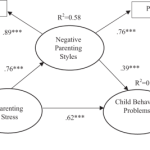Table of contents
Create a Positive Discipline Plan for Your Child: Establish Rules and Boundaries to Instill Good Habits
As a parent, you strive to love, nurture, and uphold your children. But one thing that every family must control is discipline. With a positive discipline plan in place, you can ensure your children learn good habits and grow into well-rounded individuals while respecting family authority.
To create a positive discipline plan, you will need to develop consistent rules and clear expectations while following certain techniques. Here are the main steps you should take:
1. Create Clear Rules
The first step toward creating a successful discipline plan is laying out the rules. When laying out the rules, ensure that they are clear and understandable. You should have a specific number of family rules — preferably no more than 10, and make sure nobody breaks them.
It is important to have input from parents and children when creating family rules. This way, your children understand that you all have a vested interest in upholding the rules, and they will be more likely to comply.
2. Set Clear Expectations
Part and parcel of a clear set of rules is setting clear and thought-out expectations. Regulatory expectations tell children what is acceptable and never acceptable. This can help children to understand the consequences for their behavior before making a decision.
These expectations should be discussed at intervals to make sure your children are still in line with rules and expectations. Consequences should also be discussed, including rewards for good behavior and appropriate punishments.
3. Structure Incentives
As a parent, if you’d like your children to adhere to the standards of the family’s discipline plan, you can offer rewards for good behavior. Rewards can come in the form of verbal approval, prizes, or additional privileges.
This will incentivize your children to follow the rules. Rewards such as these might be especially useful if your child is having difficulties following the discipline plan.
4. Stay Consistent
In order for the discipline plan to be effective, it is important to stick to your rules and expectations. When a rule or expectation is broken, you should administer the appropriate consequence. If a consequence is not important in the eyes of a child, it is best to find another punishment that is more significant.
In addition to this, remaining positive is key to keeping children engaged with the discipline plan. If the consequence is negative, explain why the action is unacceptable and provide steps the child can take in order to change the behavior.
5. Employ Different Approaches
Depending on the situation, you might need to employ different approaches to discipline. For instance, if your child is having difficulty with a specific rule, provide a visual aid or work with your child to devise a plan for working around the rule. Everyone learns differently, and using a variety of approaches helps make sure your child understands the expectations.
6. Choose Your Battles
Finally, creating a positive discipline plan means choosing your battles. While it is important to enforce discipline, not every situation is a matter of disobedience. Consider whether the action your child is displaying is counter to their character or a natural part of their development. Be patient, let children makes mistakes, and try to see a situation from both perspectives.
Adopting the right techniques and approaches in setting up a disciplined plan can help foster a strong and healthy relationship between parents and children. In the long run, kids will learn to save themselves from being in uncomfortable situations and teaching them good habits that they can carry into adulthood.
By following these steps and remaining consistent, you can create and maintain an effective discipline plan for your children and your family.








